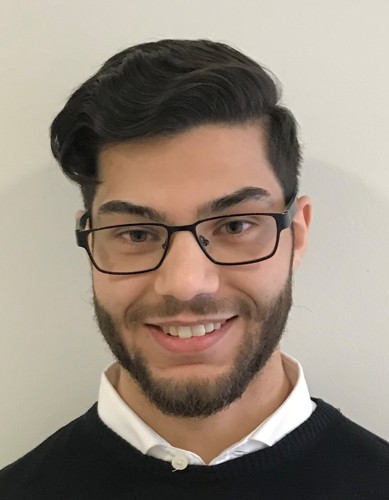Bilal El-Masri
Department of Pathology

Cellular and biomechanical mechanisms involved in activation of osteoclastic bone resorption
Background
A healthy skeleton is constantly broken down (bone resorption) and rebuilt (bone formation). This process is referred to as bone remodeling and is essential for replacing damaged bone with new healthy bone. An imbalance in the process of bone remodeling, where more bone is resorbed than formed, may lead to osteoporosis, leaving bones weaker and more prone to fractures. Osteoporosis affects every third woman and every eighth man. By the age of 50 one out of two women and one out of four men will acquire an osteoporotic fracture later in life. Each year, In Denmark, 11.000 osteoporotic fractures occur around the hip, increasing the risk of permanent disability and mortality.
Thus, osteoporosis is a direct economic expense, with the cost of osteoporotic fractures exceeding 11 billion Danish kroner each year, a number estimated to increase. Osteoporosis treatment focuses on slowing down bone resorption. The results of current treatments vary and have severe patient-related side effects. A new drug, Denosumab, works by slowing down bone resorption and has been shown to reduce the incidence of osteoporotic fractures. Discontinuation of the drug may however result in an increased bone turnover, increasing fracture risk. This may be caused by an accumulation of factors that normally activate bone resorption. Osteoporosis treatment options are thus limited, as many of the mechanisms that activate and orchestrate bone resorption remain poorly characterized. It is essential to understand activation mechanisms to pave the way for new strategies, preventing consequences of discontinuing Denosumab treatment.
Preliminary data
Preliminary data demonstrated that the target of Denosumab is mainly expressed by cells lining the bone surfaces (bone lining cells). Increased bone resorption following Denosumab discontinuation may therefore be a result of bone-lining cells expressing and accumulating factors that stimulate bone resorption.
Aim
To investigate activities and mechanisms governing activation of bone resorption, and their implication in the rebound causing bone fragility after discontinuation of Denosumab treatment. We hypothesize that activation of bone resorption is governed by bone lining cells and that these cells play a key role in the consequences of discontinuing Denosumab treatment.
Methods
The project will include four studies:
i) The mechanisms responsible for the activation of bone resorption and key role of bone lining cells will be investigated in rat models, after induction of bone resorption. This will allow identification of key factors involved in activation of bone resorption, over a period of 60 days.
ii) Following, the very same model will be subjected to a drug resembling the effects of Denosumab, allowing investigation of how the drug affects bone cells such as bone-lining cells and what causes the increased bone turnover, following discontinuation of the drug.
iii) the third study will include samples from newly diagnosed, untreated osteoporotic women and osteoporotic women treated with Denosumab for 6 months to 5 years. This is done to assess how Denosumab affects the activation of bone resorption in women diagnosed with osteoporosis.
iv) iv) A continuation of the third study will be performed in collaboration with Asst. Prof. Mariana Kersh, at University of Illinois, USA. This study will investigate whether reduced mechanical strain contributes to bone loss and fragility after Denosumab treatment.
Feasibility
Our newly established research group at OUH is highly experienced with collecting, handling and analyzing bone specimens (human and rat). Collection of human bone biopsies will be done in collaboration with doctors from Departments of Endocrinology at Odense University Hospital and Hvidovre Hospital. Methods that have not been established in our lab will be performed with experts from Department of Genetics, at Odense University Hospital and international partners from Department of Mechanical Science and Engineering at University of Illinois. The applicant has through a short stay at University of Illinois and been introduced to their methods. The applicant has been part of the group for a year and is experienced with the methods established in the lab and has already achieved a published co-authorship. Overall the project is feasible. We will constantly assess the risk of obstacles or delays, having circumventing plans ready.
